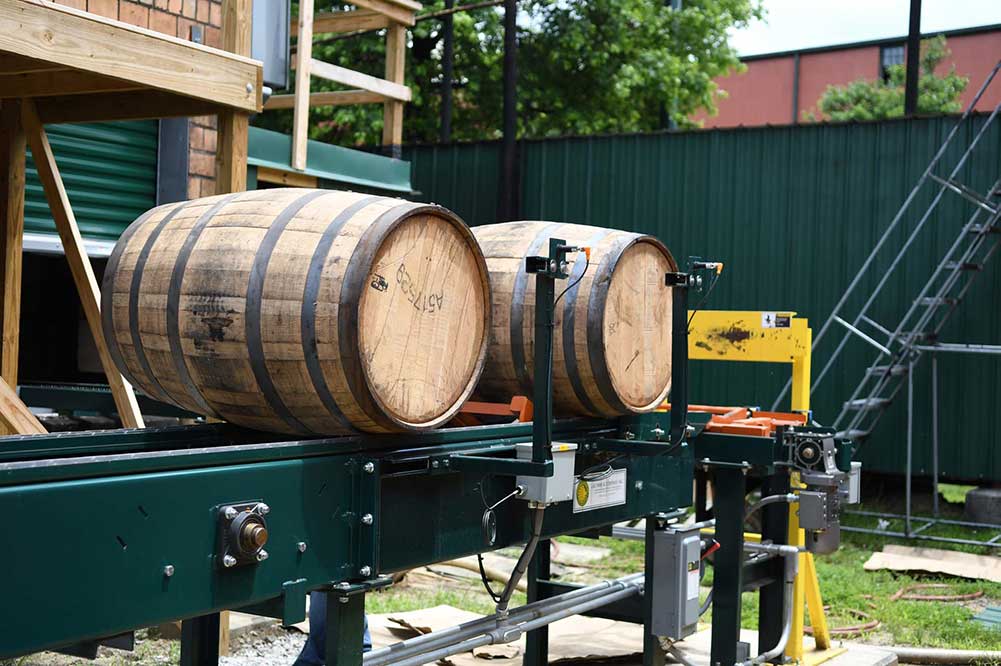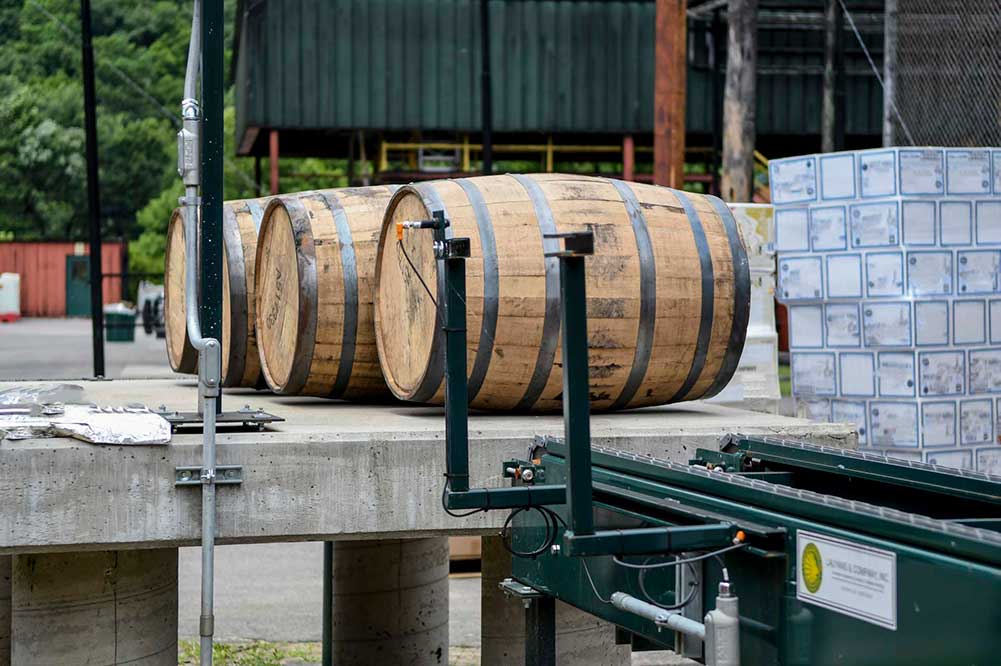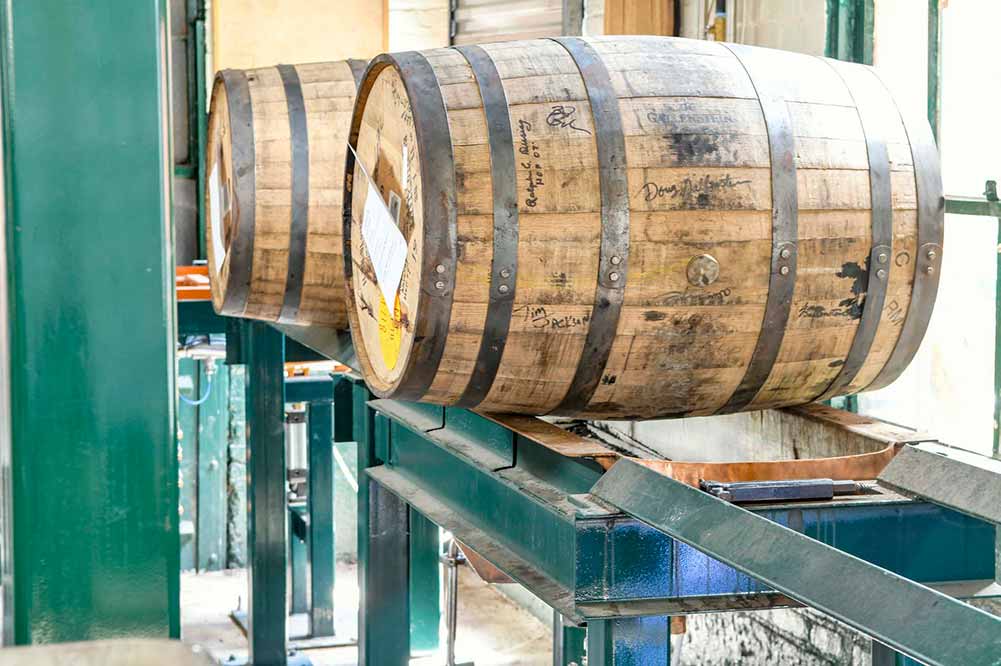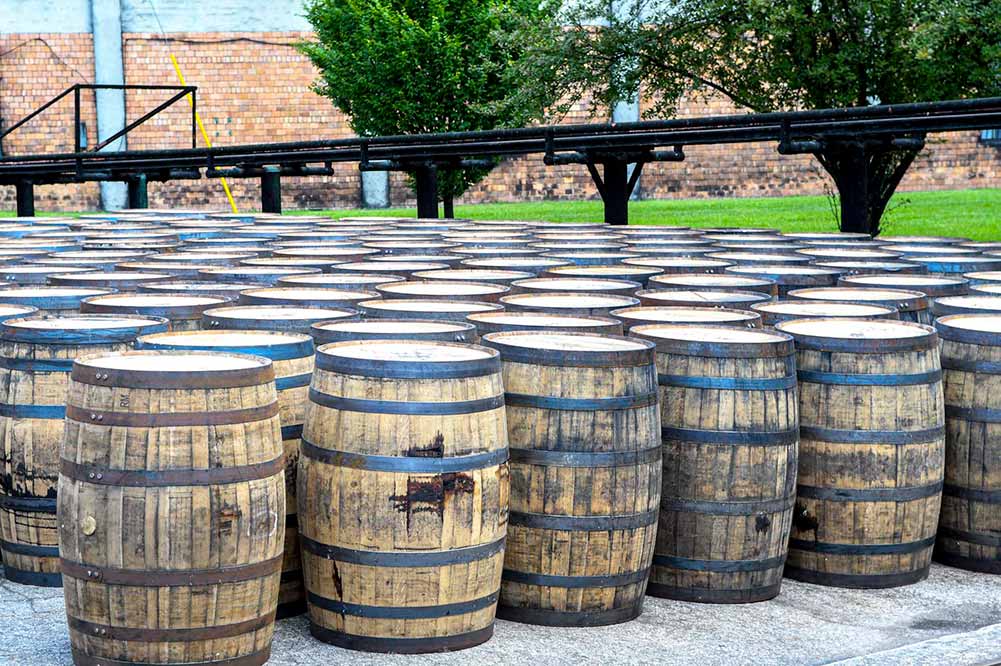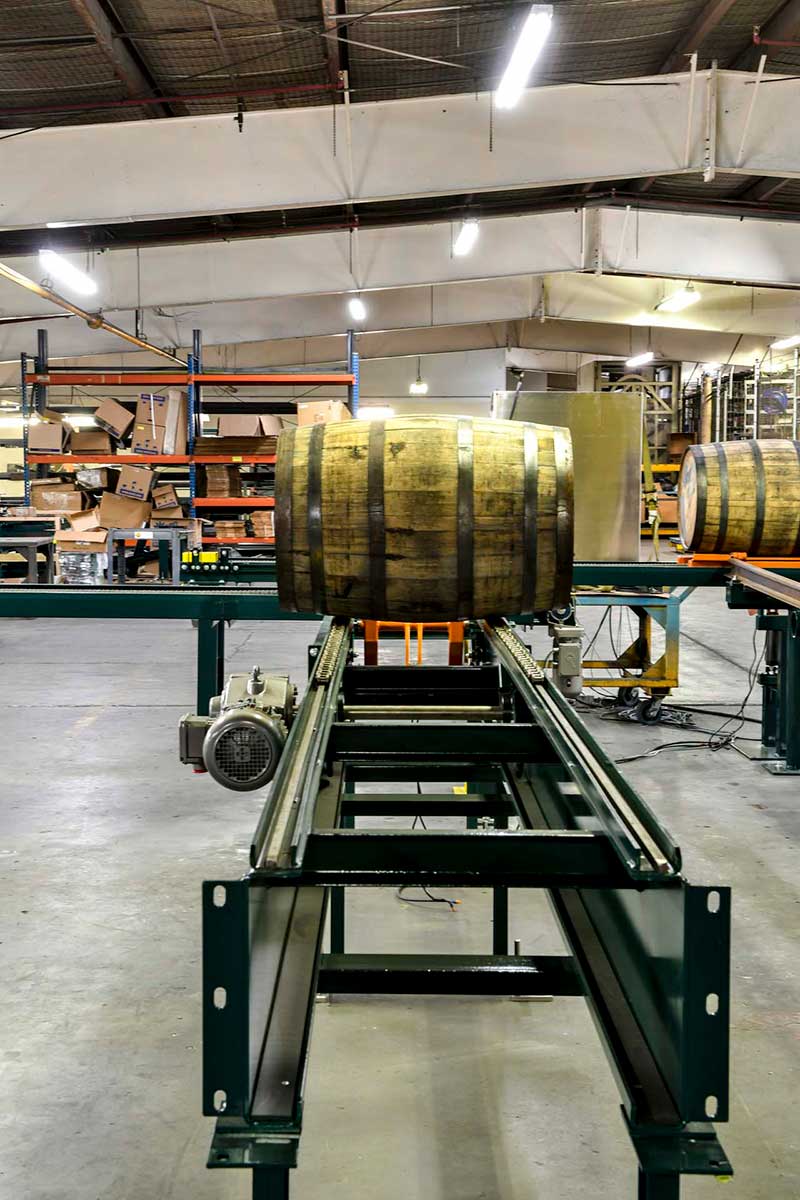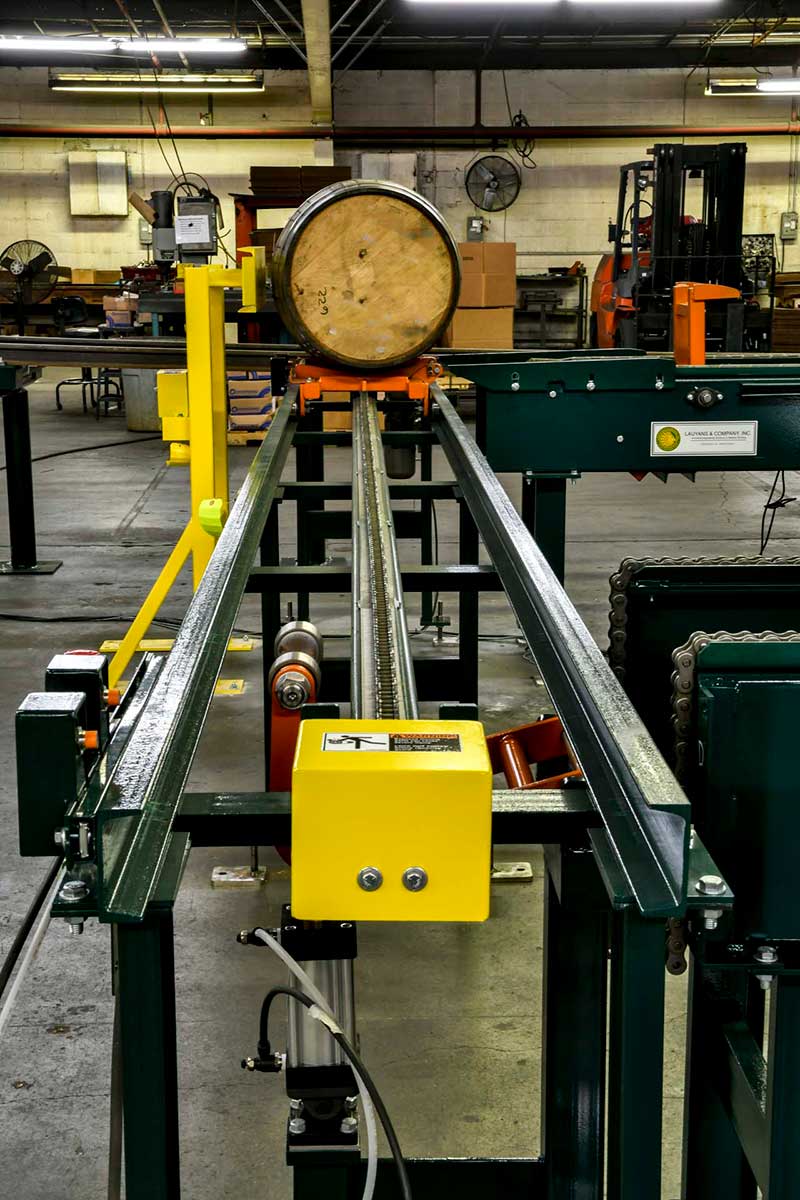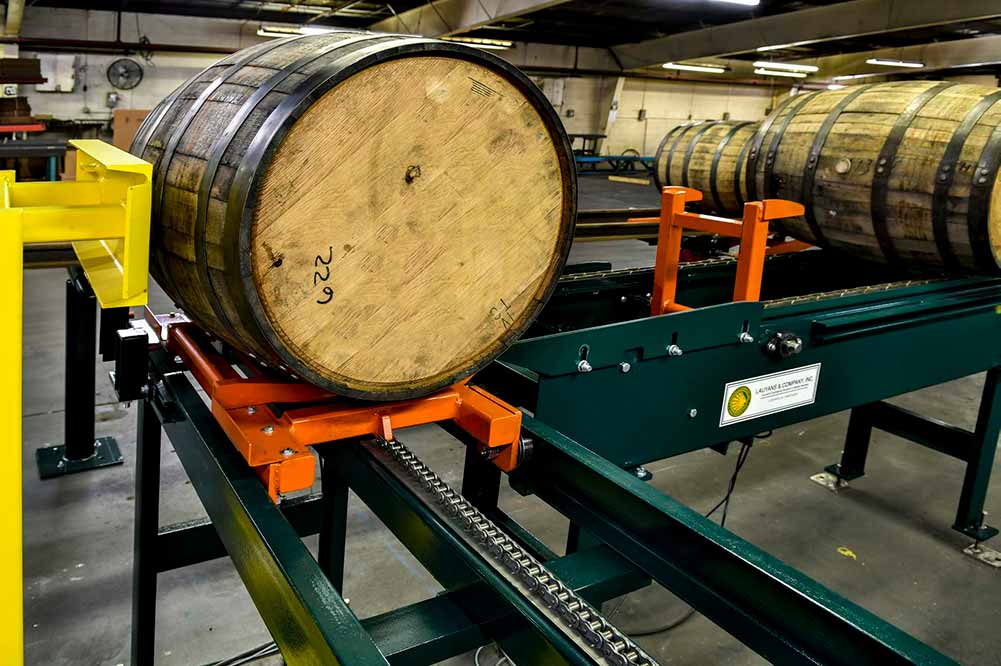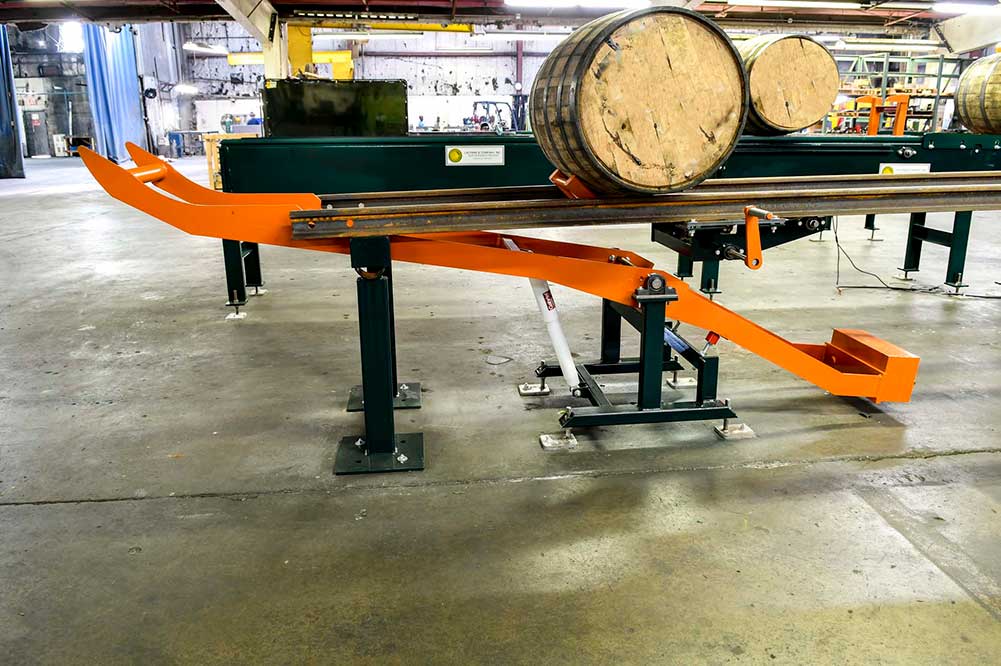A new decanting line for aged Kentucky bourbon
A Kentucky bourbon distiller asked Lauyans & Company to help with a new barrel decanting line.
- Aged bourbon in 650-pound oak barrels is brought into the building where, barrel by barrel, the bungs are removed, and the bourbon is decanted.
- The empty barrels are then conveyed back to a pickup point and removed for re-sale to brewers and others for re-use, both in the U.S. and overseas.
- Rate is determined by the number of barrels that can be drained in a single day.
- The line interfaces with a historically significant landmark structure utilized by the distiller’s past operations. Modifications to the building for the new decanting line were limited by the historical nature of the structure.
The solution that Lauyans & Company provided involves four total conveyors.
- The infeed conveyor is a heavy duty two-strand chain conveyor. It is fed by a flatbed truck that brings barrels of bourbon from century-old rickhouses where they were aged.
- Ultrasonic sensing devices aid the operators with accumulating the barrels quickly and efficiently on the infeed system.
- A shift’s bottling production of full, 650-pound barrels are loaded onto the infeed conveyor. The infeed is open to the elements, so Lauyans specified chain that is suitable for underwater use.
- The barrels are individually transported into the bottling house via a transfer car. Due to the historical significance of the building, which is over 100 years old, care was taken to ensure that the original building was not altered by the new equipment. Existing window cutouts in the side of the building were used to bring the barrels into and out of the operation through the wall of the building. Window dimensions proved just large enough to allow clearance for the barrel diameter to pass through.
- Once inside, the barrel is transferred to a trough. The bung is removed, and the barrel is emptied. The bourbon passes through filters and eventually into single batch bottles for resale.
- The empty barrels are conveyed to the out-feed system. Each barrel passes through an existing window opening in the building and then, using gravity conveyor, rolled to the end where a barrel stop holds it. Subsequent barrels accumulate behind the first one. Lauyans & Company designed a Lowerator© device which allows an operator to safely and slowly lower each barrel to the ground in a controlled manner with counterweights and a shock absorber. The empty barrels are moved to a storage site.
- A stainless steel NEMA 4 rated-control panel, also open to the elements, is used.
Lauyans & Company faced several challenges with this project.
- Abiding to the customer’s budget and strict fabrication timeline
- Interfacing conveyor equipment with a national historic landmark structure
- Designing equipment to operate in an explosion proof, enclosed area
- Providing the customer with a barrel moving system that was automated, but also provided complete manual controls for the operators to maintain production efficiency

